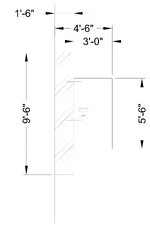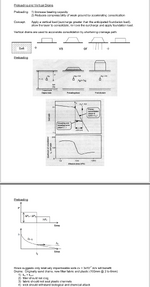JStructsteel
Structural
- Aug 22, 2002
- 1,438
Would an existing wall footing (or really the soils) have additional capacity after 35 years from consolidation? I have a wall footing I want to add some load to. Current design pressure is 2000 allowable bearing. Its maybe got 900lbs/ft currently (including footing weight).
I want to dowel into existing footing, and thus add about 2K/ft bringing the pressure to 2.9K/ft. Would the soil have consolidated enough?
Conversely, The existing wall footing is continuous, 3'-0"x1'-6" so If I said the load was distributed over my new footing width (6.5') plus the wall footing width of 9.5' i could say my pressure would be down to 2000psf along the wall.
sound reasonable?

I want to dowel into existing footing, and thus add about 2K/ft bringing the pressure to 2.9K/ft. Would the soil have consolidated enough?
Conversely, The existing wall footing is continuous, 3'-0"x1'-6" so If I said the load was distributed over my new footing width (6.5') plus the wall footing width of 9.5' i could say my pressure would be down to 2000psf along the wall.
sound reasonable?


